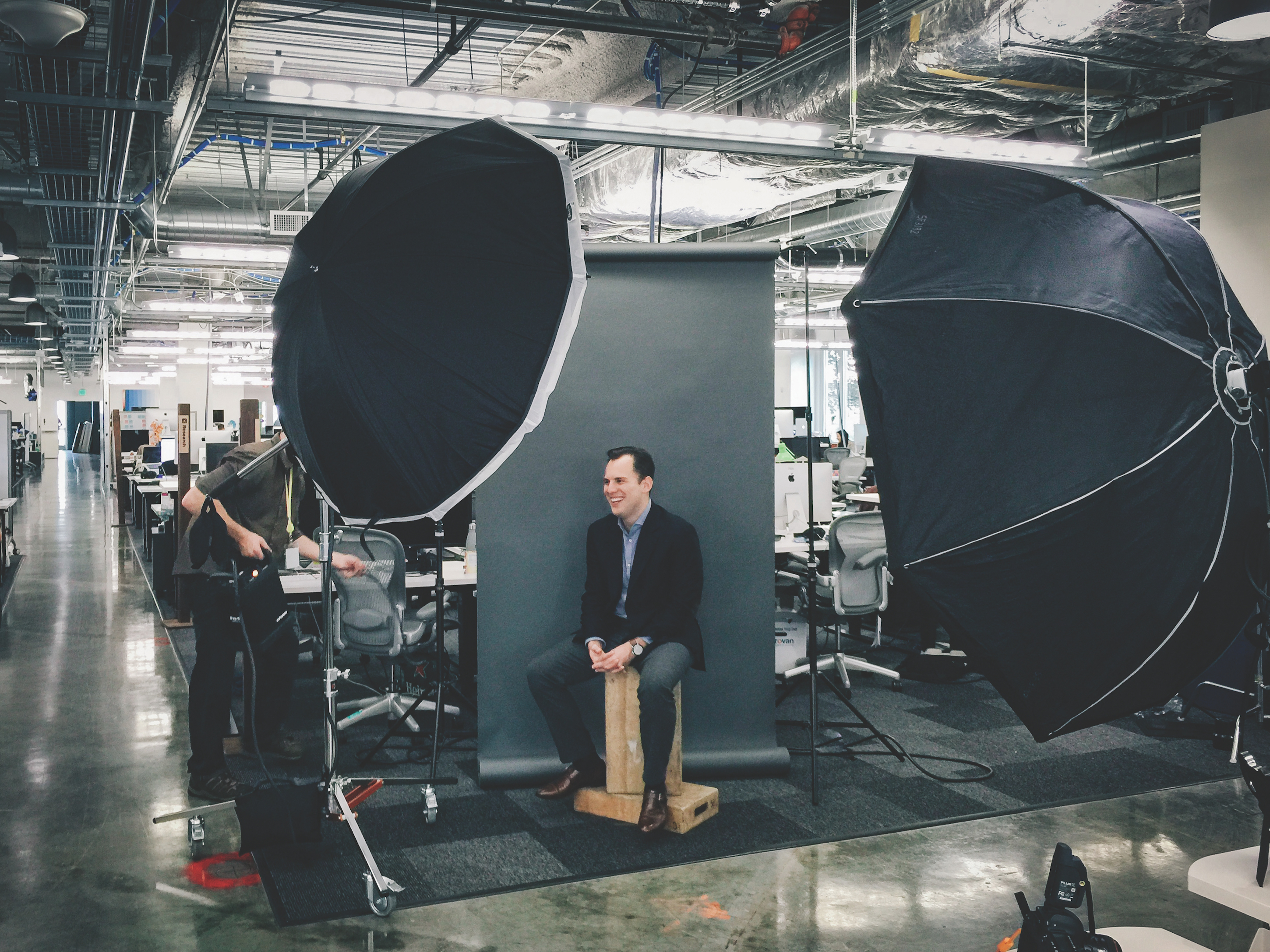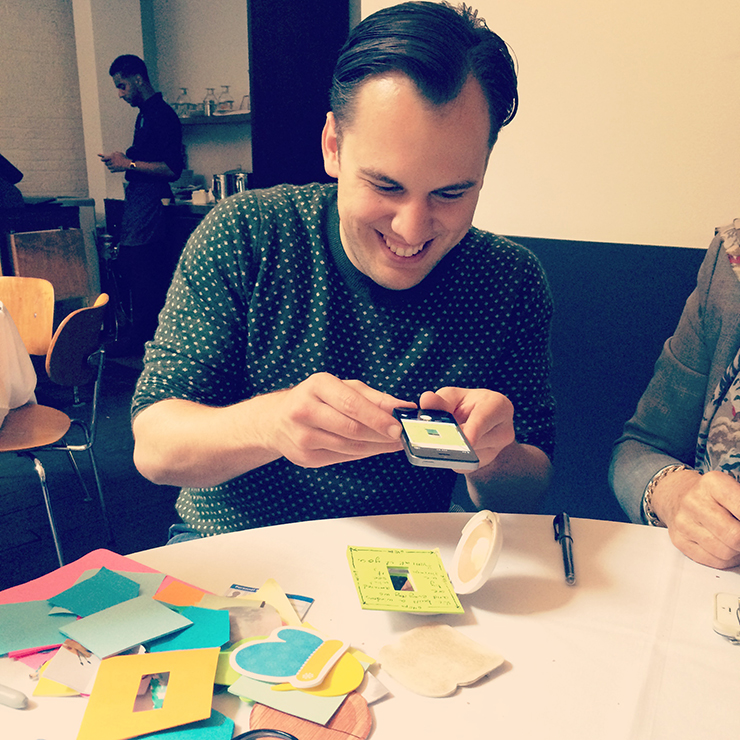
“Writing code is a lot of fun,” says Mike Krieger, the co-founder and CTO of Instagram. Originally the company’s lead engineer, he now manages the engineering team, since Instagram’s sale to Facebook in 2012.
“When you’re solving a software problem, you don’t get it. You haven’t a clue how you’re going to do it. Then, all of a sudden, it clicks into place,” he explains. “It’s like a murder mystery when everything rotates slightly in people’s heads and—aha!—it all makes sense. There’s a similar euphoria.”
Instagram occupies the ground floor of building 14 of Facebook’s original Menlo Park “campus.” While its youthful inhabitants—who head to lunch in packs—suggest college life, its architecture is more 1990s outdoor mall. Inside Instagram’s open-plan office, a sea of adjustable desks strewn with Apple and Dell monitors is demarcated by chest-high wooden signposts carved with the words “biz eng,” “design,” “policy,” “monetization” and “growth.” Along an outdoor wall, a small, brown-walled meeting room is one of Krieger’s favorite retreats. Crammed with a navy loveseat, an orange plastic chair and a yellow table adorned with a bottle of Purell hand sanitizer, the room connotes public school counselor rather than chief executive. “It would be a huge cultural shock if I ever worked in an environment where the boss had a corner office with an anteroom for his secretary,” he admits.

Instagram consisted of just 13 people in 2012; now they number 250, still a remarkably low number for a brand with 400 million active monthly users who upload an average of 80 million images a day. “We made the decision to move to Menlo Park because we knew that we needed to collaborate with Facebook’s teams for the acquisition to succeed,” explains Krieger, who turns 30 in March. “When you collaborate via phone, you’re basically setting yourself up for failure.” Ironic, I think to myself. Krieger and his co-founder, Kevin Systrom, still “run the show” with the benefit of insights from “Zuck and Sheryl” and Facebook’s dazzling array of engineering teams. “It’s not like you can just flip a switch and all of a sudden have their features. You need to slog it out to integrate,” explains Krieger, while adjusting his white-faced Aether watch. “But once you’ve done that, you can leapfrog years of work. We focus on fewer products, but we try to polish them really well.
”Like a lot of senior Silicon Valley executives, Krieger takes a high-tech, double-decker bus from San Francisco to work, catching up on emails for an hour at the beginning and end of each day. “I want a treadmill bus, so I can walk to work,” says Krieger.

Krieger was a creative child who spent much of his spare time alone at home in São Paulo, mastering diverse computer languages. “I didn’t have a lot of friends,” he says with a laugh. Warm, optimistic, almost cuddly, Krieger has a demeanor that any mother would love but one that was perhaps too smart and open for the petty rancor of the school playground. When he was seven years old, his father brought home an IBM clone, loaded with a QBasic game in which two gorillas threw bananas at each other. The player would choose the velocity and angle of the flying bananas, which turned into bombs upon impact. “It came with the code behind it. I realized that I loved messing around with the code to see how it would affect the game,” he says. By the time Krieger was 13, he was not only a dexterous coder, but also an aspiring entrepreneur who had started a web design business with a friend. “We understood HTML and JavaScript but failed to grasp the concepts of marketing or selling,” he says, so they never had any customers. In an industry that lauds “failing fast,” you might as well also “fail young.”
At Instagram, users—or “the community,” as they are called in-house—are growing so fast that it is hard for the company to keep up. If you have a particular interest—contemporary art, vintage furniture, cats—there is a sub-community for you on Instagram. “The technology behind the product is interesting but not as interesting as what happens when you put it in people’s hands,” says Krieger, adding that it is amazing that hundreds of millions of users can customize their feeds so specifically that the product gives them a sense of belonging and the comfort zone to reveal intimacies of diverse kinds. “I love it when artists use their accounts not to show their artwork but to reveal how they see the world,” he says. “Going on a walk with Stephen Shore is the equivalent of being backstage at a Taylor Swift concert.”

Instagram imagines itself as a city full of subcultures. “As a city builder, we cannot change all the street signs overnight. We don’t want people waking up confused and getting into car accidents,” he explains. “We want to ease people through the upgrades.” Given the elegant, easy-to-use interface of Instagram, it is not surprising that human-computer interaction was the main focus of Krieger’s Symbolic Systems degree at Stanford. Unlike a lot of software engineers, Krieger excelled at English, history and theater in high school, making him a perfect candidate for “Sym Sys,” which combines “techie” subjects with “fuzzy” ones from the humanities and social sciences.
Krieger is acutely aware of the need to avoid insular thinking in all parts of his life. “I didn’t want to date someone who worked in tech,” he explains. “I wanted to open my aperture.” Last September, after a six-year courtship, he married Kaitlyn Trigger, who studied political science at Yale and worked in advertising when they met. Indeed, thinking outside his own box is important to the way he envisages the future. “Living in the Bay Area, it’s easy to assume that everybody has ubiquitous fast mobile Internet on their latest iPhones and Androids,” he says. But the “future phase of growth” for Instagram is in international markets, many of which have fledgling mobile infrastructures. “It’s important for companies to ‘get out of the building,’” he explains, “and see how their products work in real-world scenarios.”










 in your life?
in your life?

